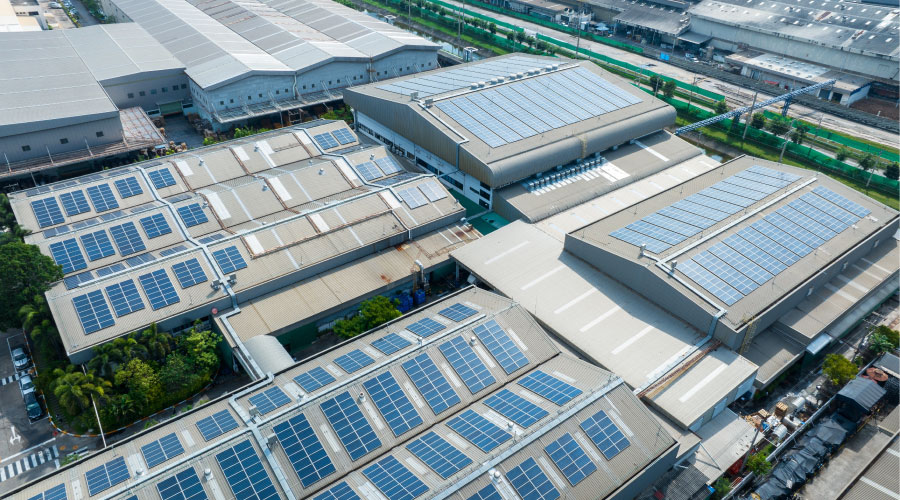Boilers: Focus on Efficiency
Revisiting equipment options to deliver energy savings and performance reliability
Today’s competitive facilities environment increases the importance of optimizing the efficiency of large systems, such as boiler plants. Numerous studies and tests have shown most boiler plants waste large amounts of fuel. With fuel rates continuing to rise, it is becoming even more imperative that boilers operate at peak efficiency. Too often, though, boiler operators are concerned only with ensuring a boiler operates, with little regard for its efficiency. So, many managers now are revisiting equipment options to increase boiler efficiency.
Replace, Repair, or Tune-up?
Boiler replacement usually is dictated by the need to replace old, poorly functioning equipment, by the expansion of an existing facility, or by construction of a new plant. If managers only need marginal additional boiler capacity — for example, to supply building or equipment additions — it might be possible to provide this capacity simply by improving efficiency, eliminating the large cost of installing new equipment.
Issues managers must weigh:
• Energy use. This element depends on such factors as the number of operating hours, the size of boilers compared with peak load, and existing versus new-system efficiency.
• Condition of existing equipment. Do boiler tubes have leaks or scale? What is the history of water-treatment practices?
• Maintenance costs. Consider trends for repairs and the availability and cost of repair parts.
• Reliability. How critical is the boiler? Is backup available?
• Allowable equipment downtime. Can the building or equipment served withstand downtime required to replace a boiler? If not, managers must weigh the cost of temporary rental boilers in the total replacement cost. If a building relies on a boiler system only during the colder weather, boiler replacement should take place during the summer.
• Building requirements for steam, if installed. If a building only uses steam to generate hot water, it probably is cost-effective to replace steam boilers with high-efficiency hot-water boilers to improve system efficiency and reduce operating and maintenance costs.
• Satellite boilers or water heaters. Managers can eliminate most distribution-system losses by installing equipment near the load. In doing so, managers also must consider potential venting issues and the availability of natural gas service.
Emphasizing Efficiency
Basic boiler design has the largest impact on the system’s efficiency and maintenance costs. First cost is a relatively small portion of investment in a boiler. Energy costs might represent 70-80 percent of the annual operating cost of boiler systems and 30-50 percent of the life-cycle cost.
Since a boiler’s capital cost is a major component of its life-cycle cost, deferred maintenance that shortens equipment life hurts the bottom line. A typical boiler uses many times the initial capital expenditure in fuel annually, so to maximize the boiler investment, managers need to specify the most efficient boiler for the application.
Among the replacement options are converting steam to hot-water boiler systems, using non-condensing type boilers and water heaters, and using condensing type boilers and water heaters.
An efficiency increase of 11-15 percent is possible when comparing condensing equipment with non-condensing equipment. Managers can easily address the creation of sulfuric acid in flue gases by using stainless steel for flue piping and by collecting and draining condensate. Doing so can result in efficiencies of greater than 95 percent.
Modular or Larger?
Boilers operate most efficiently when they cycle on and off the least. For this reason alone, modular boiler installations are becoming more common, compared with the traditional strategy of installing one large boiler with a 100 percent redundant back-up boiler.
Boilers generally have very poor efficiencies at low loads. Those with measured efficiencies greater than 80 percent actually will operate at less than 60 percent annually. The reason installations of multiple packaged boilers can operate more efficiently is they are better able to match the current load with boiler capacity and, thus, cycle on and off less frequently. Managers should employ controls to stage the boilers on as required to match the load.
Cost-Effective Components
Modern boilers include the following burner features:
• re-circulated flue gases, which ensures optimal combustion with minimal excess air
• sophisticated electronic control systems that monitor flue-gas components and adjust fuel and air as needed
• greatly improved turndown ratios to improve efficiency at less than peak load
• powered or forced draft burners, instead of atmospheric burners.
The number of passes a boiler is designed for affects its efficiency. Generally, the more passes, the higher the efficiency. Fire-tube boilers designed with turbulators inside the tubes with fewer passes improve efficiency.
Dual-Fuel Options
Most boilers use natural gas, but dual-fuel burners often are a viable option for facilities that can use an alternate fuel, such as oil, during short periods that a gas utility is under peak demand. The result is lower annual interruptible gas rates.
Backup fuel also might be provided to ensure boiler operation in the event of a problem with the gas system. Fuel oil fires at higher efficiencies than natural gas because it has less water vapor during combustion, but such equipment typically is more costly to operate. Having more than one fuel type available for a boiler provides the option of using the fuel that is the least expensive to operate at a given time.
Managers have a number of optional components in new or retrofit applications to improve efficiency.
They can install burners equipped with digital-combustion management to automatically adjust excess air and fuel for precise control and maximum efficiency throughout the firing range. In some cases, it might be more cost-effective to retrofit existing boilers with new burners and controls to improve efficiency, rather than replace the boilers, especially if they are fairly new and in good condition.
But managers must ensure burners and boilers are compatible. It is important controls and efficiency be maintained over the boiler’s life.
One option with these burners is remote operation, diagnostics and monitoring through interface with a building management system. Changing from natural gas to a backup fuel oil can be much easier with these burners and controls, with fuel adjustments resulting in maximum energy savings.
Also, new controls can minimize drafts through off-line boilers. The linkages associated with most burner controls often require calibration for optimal performance. One alternative to these linkages is a dedicated stepper motor, which increases accuracy throughout the modulating range.
It is more cost-effective to replace the burners with new burners and controls than it is to retrofit old existing burners with new controls. Many boilers, even newer installations, include standard-technology burners and controls, since high-efficiency options often were not specified. Consequently, contractors and manufacturers installed standard equipment because the competitive bidding process required them only to meet the minimum requirements specified.
Focus on High Turndown Ratios
Since boiler designs and installations often are oversized, the ability to match the load with the burner capacity affords greater energy-saving opportunities. Most boilers, especially older models, operate at 30-40 percent load and firing range and typically have only one or two firing rates.
For most boilers, the greatest efficiency occurs at 50-60 percent load. Oversized boilers result in excess on and off cycling, reducing both efficiency and service life. Inefficiencies occur because each time a boiler starts, it goes through a pre-purge cycle to expel non-combustibles and, later, a post-purge cycle. Both cycles cause additional wear on components.
Frequent starting and stopping also interrupts system performance because delays occur in meeting loads, increasing the chances of thermal shock. Turndown ratios for boilers available today typically range between 10:1 and 20:1.
Instead of replacing large — 250 horsepower and greater — oversized, inefficient boilers, managers can retrofit burners with these high-turndown burners. Managers also can opt to equip boilers of any size with full modulation, which provides maximum efficiency. Many new boilers come equipped with high-turndown capability.
Combustion-Fan Operation
Of course, boiler loads generally vary throughout operation, no matter the application. Because a typical configuration consists of a combustion-fan motor running at constant nominal speed with the same airflow throughout the various loads, the excess air quantity and exhaust-gas temperatures are very high at low loads.
Consequently, boiler efficiency typically is very low because of the thermal-energy losses that also lead to electric-energy losses. Fitting a combustion-air fan with a variable frequency drive (VFD) improves boiler efficiency and reduces stack temperatures and energy losses.
The wider and more frequent the variations in load, the more benefits provided by VFD control of the combustion fan. Power use varies with the cube of the speed, so managers can obtain significant energy savings from only small changes in speed.
Control Considerations
Finally, managers can reset hot-water temperatures based on outside-air temperature, instead of the indoor thermostat reading. The ability to monitor single or multiple boilers remotely in real time via the internet can alert operators to problems, such as inefficiencies, earlier than they otherwise might detect them.
The ability to monitor boiler performance is crucial to ensure its operating efficiently. Today’s microprocessor-based computerized controls can provide a powerful tool for monitoring, diagnosing and controlling system efficiency. Generally, automatic blowdown controls are more efficient than manual operation.•
Jeffrey T. Hunt, P.E., CEM, GBE, CxA, is senior project manager with Facility Engineering Associates, www.feapc.com
Related Topics:











